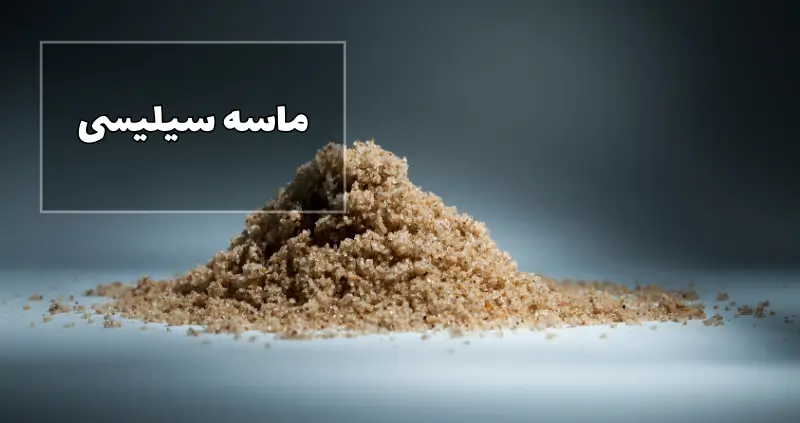
Silica sand is a simple but very useful natural substance that plays an important role in our daily life. This small and fine-grained substance is the main key for making many modern products and industries. From household glass to durable concrete and coastal slopes, everyone uses silica sand in some way.
But have you ever thought about where silica sand comes from? How is it formed and what processes are required to extract and process it? What unique chemical and physical properties does this small but powerful substance have that make it very suitable for various applications?
In this article, we will discover and explore the wonderful world of silica sand. From its sources in nature to extraction and processing processes, as well as its diverse and vital applications in today’s life. So get ready to learn more about this tiny but precious particle and discover the secrets hidden in it.
Features of silica sand
Silica sand has a unique chemical composition that makes it suitable for various applications. This material is mainly composed of silicon oxide (SiO₂), which makes up more than 99% of its composition. Silica is a stable compound resistant to chemical reactions, which gives silica sand unique properties such as resistance to heat, corrosion and erosion. In addition, impurities in silica sand such as iron, aluminum and potassium can affect its color and physical properties.
In terms of physical properties, silica sand has interesting features. Silica sand grains usually have different sizes and shapes, from soft fine grains to larger and angular grains. The density of silica sand also varies depending on its purity and porosity, but it is usually in the range of 2.6 to 2.7 grams per cubic centimeter. The color of silica sand can also vary from white or light yellow to red or black, depending on the impurities present in it.
One of the distinctive features of silica sand is its high resistance to environmental factors. This material is well resistant to heat, cold, moisture and erosion and maintains its stability even in harsh conditions. In addition, silica sand has good electrical and thermal insulation properties, which makes it very suitable for applications such as making glass and ceramics. These unique features have made silica sand a valuable and useful material in various industries.
Sources and formation of silica sand
Silica sand is one of the most abundant mineral resources in nature, which is obtained from the erosion of igneous, sedimentary and metamorphic rocks. The main natural sources of silica sand include coastal sediments, rivers, sand plains and sand dunes. These resources are rich in silica sand with different degrees of purity and can be exploited for extraction and use in various industries.
The formation process of silica sand is a long geological cycle that occurs over millions of years. This process begins with the erosion of siliceous rocks by natural factors such as wind, water, glaciers and temperature changes. The fine particles resulting from this erosion are moved by water and wind and settle in different areas. Over time, these sediments are compacted and turn into siliceous sands.
The type and quality of silica sand depends on the origin of the parent rock, weather conditions and sedimentation processes. Siliceous sands from erosion of igneous rocks such as granite are usually of higher purity, while sands from sedimentary and metamorphic rocks may contain more impurities. Environmental conditions such as temperature, humidity and chemical processes can also affect the properties and composition of silica sand.
Extraction and processing of silica sand
Silica sand extraction can be done through different methods. The surface method or open pit mining is one of the most common methods of extracting this material. In this method, the upper layers of soil and rock are removed to access the silica sand deposits. Another method is underground mining, which is used to extract deeper deposits of silica sand. In this method, tunnels and corridors are dug underground to access the silica sand.
After extraction, silica sand must be processed and purified through various processes to prepare it for industrial applications. One of these processes is crushing, where silica sand is broken into smaller particles by crushers or mills. Then, the washing process is carried out to separate the impurities and waste materials from the silica sand. In some cases, chemical methods such as acid washing are also used to further purify silica sand.
In the next step, the processed silica sand must be granulated to prepare it for specific applications. This process is done using sieves and vibrating plates that divide the sand into grains of different sizes. Finally, silica sand is processed and granulated, ready to be transferred to various factories and industries. Silica sand extraction and processing processes play an important role in providing the raw material with the desired quality for various industries.
Learn more: Chromite sand
Applications of silica sand
One of the most important uses of silica sand is in the construction industry. This material is one of the main components of concrete and is used to produce all kinds of concrete, mortar and other construction materials. In addition, silica sand plays an essential role in the production of glass and glass products. The high purity and resistance of this material makes it very suitable for making all kinds of construction glass, automobiles and household appliances. In the ceramic industry, silica sand is one of the key raw materials for the production of tiles, building ceramics and other ceramic products.
In the chemical and petroleum industries, silica sand has various uses. This material is used as a filler, absorbent or catalyst in various chemical processes. In the oil industry, silica sand is used for hydraulic fracturing of oil rocks and increasing oil and gas production. This process, known as “hydraulic fracturing”, plays an important role in the extraction of fossil energy resources.
In addition to the above, silica sand is also used in other applications. In toolmaking industries, this material is used to make all kinds of sandpapers, grinding stones and cutting tools. In arts and crafts, silica sand is also used to produce colored glass, glass sculptures and other works of art. Also, in agriculture, silica sand can be used as a soil improver and also for the construction of greenhouses. These diverse applications show the importance and value of silica sand in daily life and various industries.
